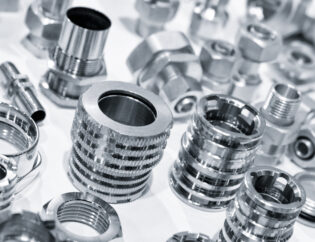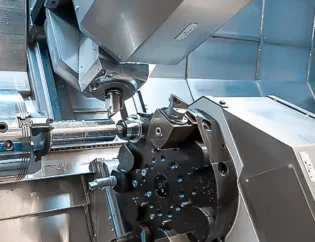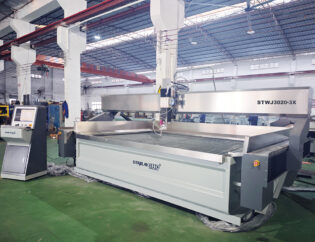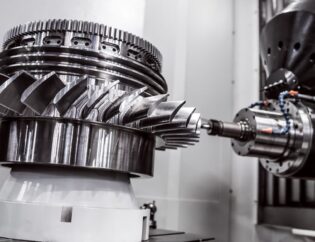Machining surface finish is a critical aspect of manufacturing that directly impacts the performance, durability, and aesthetic appeal of machined components. Understanding the nuances of surface finish can lead to improved product quality and reduced production costs. This guide aims to demystify the various factors influencing surface finish, providing insights into techniques, measurement methods, and best practices.
Readers can expect to explore the different machining processes and their effects on surface quality. We will delve into the significance of surface roughness, the role of cutting tools, and the impact of machining parameters. Additionally, the guide will cover advanced finishing techniques and the latest technologies that enhance surface quality.
By the end of this guide, readers will have a comprehensive understanding of machining surface finish, equipping them with the knowledge to make informed decisions in their manufacturing processes. Whether you are a seasoned professional or a newcomer to the field, this resource will serve as a valuable reference for achieving optimal surface finishes in your projects.
Machining Surface Finish: Chart & Guide
Machining surface finish influences the quality, durability, and performance of manufactured parts and components. For instance, when manufactured products possess smooth surfaces, they resist wear and tear better than finished parts with rougher surfaces because friction levels remain lower. Now depending on the application being manufactured, certain roughness specifications must be met. By better understanding the different machined surface finishes, the varying roughness levels, and how surface finishes impact function, you can ensure the quality and performance of manufactured applications. If you’re interested in learning more about machining surface finishes, then you’re in the right place.
Understanding Surface Finish
Surface finish refers to the texture of a surface, which is crucial in determining how a product interacts with its environment. It is characterized by three main elements: roughness, waviness, and lay. Each of these elements plays a significant role in the overall performance and durability of a product.
Technical Features of Surface Finish
| Feature | Description |
|---|---|
| Roughness | Refers to the small irregularities on the surface, often measured using parameters like Ra and Rz. |
| Waviness | Larger, more broadly spaced variations in surface finish, often caused by machining defects. |
| Lay | The direction of the predominant surface pattern, which can affect friction and adhesion. |
Types of Surface Finish
Different machining processes yield various surface finishes, each with unique characteristics and applications. Understanding these types can help in selecting the right process for specific needs.
| Type of Finish | Description |
|---|---|
| Rough Casting | Coarsest finish, typically with high Ra values, suitable for non-critical applications. |
| Normal Turning | Produces visible machining marks; used for general applications where aesthetics are less critical. |
| Fine Grinding | Achieves a smoother finish with minimal visible marks, ideal for precision components. |
| Polishing | Provides a high-gloss finish, often used in decorative applications and for corrosion resistance. |
Importance of Surface Finish
Surface finish is vital in various industries, including automotive, aerospace, and manufacturing. A smooth surface can enhance durability, reduce friction, and improve the overall performance of components. For example, at moseys.com, the significance of surface finish in machining services is emphasized, highlighting its impact on product longevity.
Measuring Surface Roughness
Surface roughness is typically measured using several methods, including contact and non-contact techniques. The most common parameters used are Ra (Average Roughness) and Rz (Mean Roughness Depth). These measurements help manufacturers ensure that their products meet specific quality standards.
Factors Affecting Surface Finish
Several factors can influence the surface finish of a product, including:
– Cutting Speed: Higher speeds generally lead to smoother finishes.
– Feed Rate: A lower feed rate can improve surface quality.
– Tool Condition: Worn tools can negatively impact surface finish.
– Coolant Use: Proper coolant application can enhance surface quality by reducing friction and heat.
Surface Finish Standards
Understanding surface finish standards is crucial for engineers and manufacturers. The American Society of Mechanical Engineers (ASME) provides guidelines for specifying surface finishes on technical drawings. These standards help ensure that parts fit together correctly and function as intended.
Surface Finish Conversion Chart
| Parameter | Microinches (µin) | Micrometers (µm) |
|---|---|---|
| Ra | 1 | 0.025 |
| Rz | 8 | 0.2 |
| RMS | 32 | 0.8 |
Conclusion
Achieving the desired surface finish is essential for the performance and durability of manufactured products. By understanding the various types of finishes, their technical features, and the factors that influence them, manufacturers can make informed decisions that enhance product quality. Websites like at-machining.com and www.gdandtbasics.com provide valuable resources for further exploration of surface finish standards and measurement techniques.
FAQs
Related Video
What is surface finish?
Surface finish refers to the texture of a surface, characterized by roughness, waviness, and lay, which affects the performance and durability of a product.
How is surface roughness measured?
Surface roughness is measured using parameters like Ra and Rz, typically with instruments such as profilometers or through visual inspection methods.
Why is surface finish important?
Surface finish is crucial for ensuring the durability, performance, and aesthetic quality of manufactured parts, impacting their functionality in various applications.
What factors affect surface finish?
Factors include cutting speed, feed rate, tool condition, and the use of coolant, all of which can influence the final surface quality.
Where can I find more information on surface finishes?
For more insights, you can explore resources on websites like www.rapiddirect.com and www.tuofa-cncmachining.com, which offer detailed guides and charts related to surface finishes.









